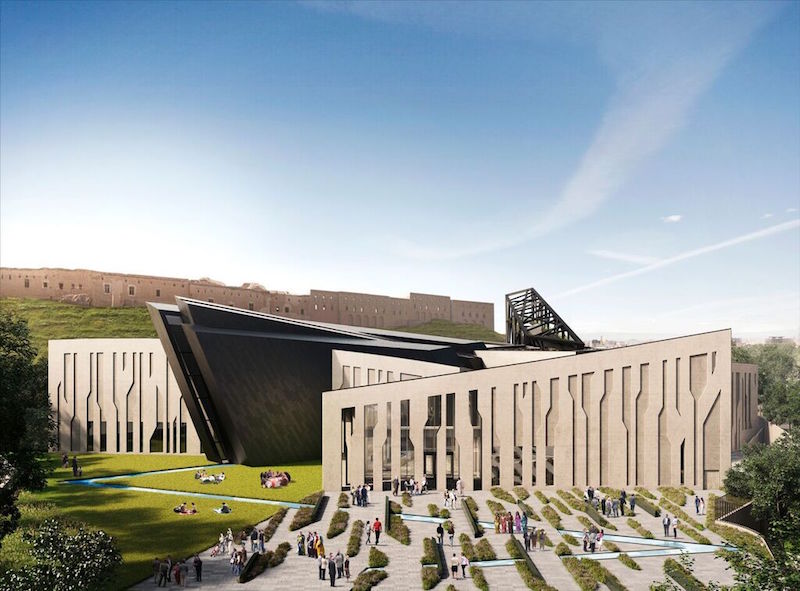
The autonomous region of Iraqi Kurdistan is getting a new art museum dedicated to Kurdish art, history, and culture.
After years of rumors, architect Daniel Libeskind officially confirmed that his Studio Libeskind has been commissioned to construct the first major Kurdish arts center, which will be erected in the capital city of Erbil, located in northern Iraq. Libeskind presented the plans at the Bloomberg Businessweek Design conference in San Francisco yesterday.
Rendering of the proposed Kurdistan Museum.
Photo: Courtesy Studio Libeskind
The design studio will collaborate with the Kurdish Regional Government and the Kurdish multimedia company RWF World on the project to “share the story of the Kurdish people with the world and inspire an open dialogue for the future generations within Kurdistan,” Studio Libeskind said in a press release.
The museum’s four interlocking buildings represent the regions of Turkey, Syria, Iran, and Iraq, across which the ethnic Kurdish people are dispersed.
Rendering of the proposed Kurdistan Museum.
Photo: Courtesy Hayes Davidson
“The design had to navigate between two extreme emotions; sadness and tragedy, through the weight of history, and joy and hope, as the nation looks to the future,” Libeskind said in a statement. “The volumes are intersected by a line that is broken into two angular fragments representing the past and future of Kurdistan.”
One such fragment referred to by the architect symbolizes the attempted genocide of Kurds by Saddam Hussein’s forces, which killed 50,000 residents of northern Iraq during the Iran-Iraq war. Another fragment of the building, the so-called Liberty Line, symbolizes an eternal flame for the Kurdish spirit.
The interior will include exhibition spaces, a lecture theater, educational facilities, and an open-air courtyard for community gatherings.
Rendering of the proposed Kurdistan Museum.
Photo: Courtesy Hayes Davidson
However, there’s two issues that prevent the renderings from becoming a reality in the near future. The first is that instability in the region makes it impossible to begin construction, since northern Iraq is currently a war zone.The second is that the Kurdistan Regional Government’s resources are likely to go towards urgent reconstruction projects once the area stabilizes.
While local government is campaigning for outside investment for the museum, it may well be several years before the project becomes a reality.